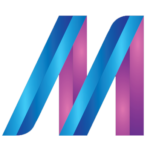Have you ever wondered the difference between the top 3D modeling software programs SketchUp, Revit and Rhino. Keep reading to find out the best and worst bits of each of those programs. Whether you’re a designer, inventor, architect or engineer, you will want to keep some of these things in mind in planning which software to learn and focus on for your career and projects to come.
1. SketchUp
Advantages:
- Quick idea to form through Intuitive form making
- Great plugins for visualization and model development
- Easy to customize material settings, including photomatch textures direct from 3d engines
- 1000s of free models and plugins via 3D warehouse and Extension warehous
- Detailed 3D control, including colors, textures and visibility
- Easy integration with 3D fabrication programs
Disadvantages
- Not as precise and easy to veer off axis making skew lines
- Perspective Clipping in large models hinders large models with details
- Plugin incompatibility occasionally causes issues
Ideal for:
- Architects, Designers and Builders
- Small and medium custom project project, including furniture and industrial design
- Schematic and design idea phases project
- Can advanced through construction documents, on smaller projects
Learn more in my SketchUp fundamentals course here:
2. Revit
- Built in BIM functionality and collaboration features
- Advanced building systems such as roof and wall systems
- 1000s of models and plugins via the RevitCity, the Autodesk App store and manufacturer websites
- Detailed control of lineweights and types
Disadvantages
- Large infrastructure clashes when systems intersect, ie iterations in same area
- Lack of layer control, with items such as walls all on one strata
- Lack of proper nesting beyond one level, requiring more meticulous groups or component understanding
Ideal for:
- Architects and Engineers
- Larger projects with more standardized elements and forms
- Projects needing collaboration with several designers and consultants
- Projects needing accurate systems and calculations from building information modeling
Learn more in my Revit fundamentals course here:
3. Rhino
Advantages
- Works easily with NURBs geometry and complex curves
- Great dynamic scripting visualization with plugins like Grasshopper
- Growing rendering and animation capabilities with Rhino and downloadable plugins
- Easy integration with advanced fabrication tools and software
Disadvantages
- Modeling can be quick, but is bulky and more centralized
- Lacks in-built BIM functionality, though plugins are out there
- Requires much practice for full abilities of the program
Ideal for:
- Architects and Industrial Designers
- Complex Architectural forms and furniture
- Unique large systems that need a calculated systems for fabrication
- Exterior Mass elements that can integrate with other BIM programs for simpler more typical spaces/systems
We don’t currently have a course for Rhino, but stay tuned for a 2021 release!
Check out a quick tour of the three platforms on our channel:
If you like this type of content, subscribe here and check out our latest videos on our channel here:
